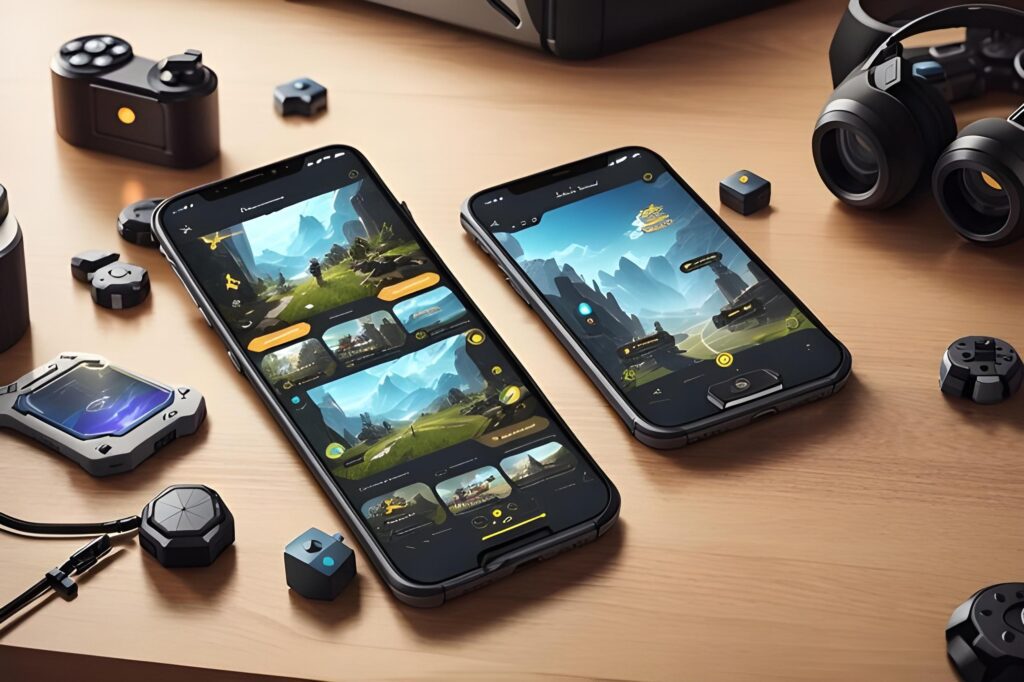In the rapidly evolving landscape of mobile game development, optimizing the creation process is paramount for developers aiming to deliver high-quality experiences while managing time and resources effectively. This article delves into advanced strategies for optimizing the mobile game development process on Android, focusing on performance, resource management, and user engagement. By leveraging real-world examples and data, we will explore how developers can streamline their workflows and enhance the overall quality of their games.

Understanding the Mobile Game Development Landscape
The mobile gaming industry has witnessed exponential growth, with Statista reporting that mobile games generated approximately $77.2 billion in revenue in 2020, accounting for nearly 50% of the global gaming market (Statista, 2021). As of 2023, the number of mobile gamers worldwide is projected to exceed 3 billion, highlighting the immense potential for developers. However, with this growth comes increased competition, necessitating a focus on optimization to stand out in a crowded marketplace.
Key Optimization Strategies
1. Efficient Asset Management
One of the most critical aspects of mobile game development is asset management. High-resolution graphics, sound files, and animations can significantly impact the game’s performance and loading times. Developers should consider the following strategies:
Utilizing texture atlases can reduce the number of draw calls, which is essential for maintaining frame rates on mobile devices. For instance, a game that uses 100 individual textures may experience performance degradation due to the overhead of multiple draw calls. By combining these textures into a single atlas, developers can minimize this overhead, resulting in smoother gameplay.
Moreover, employing tools like Unity’s Sprite Packer or TexturePacker can automate the process of creating texture atlases, allowing developers to focus on other critical aspects of game design.
2. Code Optimization and Profiling
Code efficiency is paramount in mobile game development. Poorly optimized code can lead to increased CPU usage, battery drain, and lag, which can frustrate players. Developers should adopt the following practices:
Using profiling tools such as Android Profiler or Unity’s Profiler can help identify bottlenecks in the code. For example, a study by Unity Technologies found that optimizing a game’s rendering pipeline can lead to performance improvements of up to 50% (Unity Technologies, 2022). By analyzing frame rates, memory usage, and CPU load, developers can pinpoint areas for improvement.
Additionally, implementing object pooling can significantly reduce the overhead associated with frequent object instantiation and destruction. This technique is particularly useful in games with numerous dynamic objects, such as bullets or enemies, where reusing objects can lead to substantial performance gains.
3. Leveraging Game Engines and Frameworks
Choosing the right game engine can have a profound impact on the development process. Popular engines like Unity and Unreal Engine offer robust tools and features that can streamline development. For instance, Unity’s Asset Store provides a plethora of pre-built assets and plugins that can save time and resources.
Furthermore, utilizing frameworks like LibGDX or Cocos2d can provide developers with the flexibility to create high-performance games while maintaining control over the codebase. A study by Gamasutra indicated that developers using Unity reported a 30% reduction in development time compared to those using custom engines (Gamasutra, 2021).
4. Implementing Continuous Integration and Deployment (CI/CD)
Incorporating CI/CD practices into the mobile game development process can significantly enhance efficiency. By automating the build and testing processes, developers can identify issues early and ensure that new features do not introduce bugs.
Tools like Jenkins or GitLab CI can be integrated into the development workflow to automate builds and run tests on various devices. This approach not only accelerates the development cycle but also improves the overall quality of the game. According to a report by Atlassian, teams that implement CI/CD practices can achieve a 20% increase in deployment frequency (Atlassian, 2022).
5. User-Centric Design and Testing
Understanding user behavior is crucial for optimizing the mobile game experience. Conducting user testing and gathering feedback can provide valuable insights into gameplay mechanics, user interface design, and overall engagement.
For example, a case study by PlaytestCloud revealed that games that underwent user testing before launch saw a 25% increase in player retention rates (PlaytestCloud, 2021). By iterating on feedback and making data-driven decisions, developers can create more engaging and enjoyable experiences for players.
Real-World Examples of Optimization
Several successful mobile games have implemented these optimization strategies effectively.
1. PUBG Mobile
PUBG Mobile, developed by Tencent Games, is a prime example of efficient asset management and code optimization. The game employs a highly optimized rendering engine that allows it to run smoothly on a wide range of devices. By utilizing texture atlases and object pooling, PUBG Mobile maintains high frame rates even in intense combat scenarios.

Code and asset optimization ensures PUBG Mobile performance.
2. Monument Valley
Monument Valley, developed by ustwo games, showcases the importance of user-centric design. The developers conducted extensive user testing to refine the game’s mechanics and visuals, resulting in a visually stunning and highly engaging experience. The game’s success, with over 30 million downloads, underscores the value of prioritizing user feedback in the development process.
Key Points
- Efficient asset management through texture atlases can significantly enhance performance.
- Profiling tools are essential for identifying and addressing code bottlenecks.
- Choosing the right game engine can streamline development and reduce time-to-market.
- Implementing CI/CD practices can improve deployment frequency and overall quality.
- User-centric design and testing are crucial for enhancing player engagement and retention.
In conclusion, optimizing the mobile game development process on Android requires a multifaceted approach that encompasses asset management, code optimization, effective use of game engines, CI/CD practices, and user-centric design. By implementing these strategies, developers can enhance performance, reduce development time, and ultimately deliver high-quality gaming experiences that resonate with players. As the mobile gaming industry continues to grow, those who prioritize optimization will be well-positioned to succeed in this competitive landscape.

